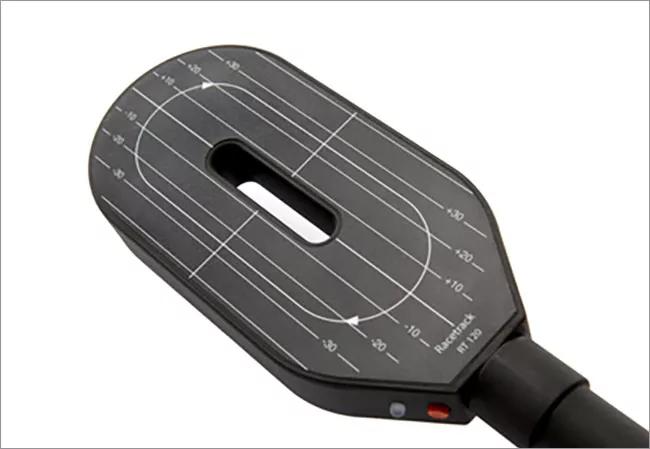Study extends efficacy findings to inspiratory muscle conditioning

Individuals with spinal cord injury appear to have a promising noninvasive tool for respiratory muscle conditioning: functional magnetic stimulation (FMS) of the inspiratory and expiratory muscles.
Cleveland Clinic is a non-profit academic medical center. Advertising on our site helps support our mission. We do not endorse non-Cleveland Clinic products or services. Policy
That’s the conclusion of a notable clinical study published recently in PM&R: The Journal of Injury, Function and Rehabilitation by Cleveland Clinic researchers who have been exploring this application of FMS for more than two decades. The goal of FMS respiratory muscle conditioning in patients with spinal cord injury is to restore function of the respiratory muscles lost as a result of disuse.
“We demonstrated that FMS of the cervical and lower thoracic regions in patients with tetraplegia produced substantial improvements in both inspiratory and expiratory functions,” says senior author Vernon Lin, MD, PhD, Director of Rehabilitation Research in Cleveland Clinic’s Department of Physical Medicine and Rehabilitation. “This noninvasive alternative to conditioning the respiratory muscles has the potential to help prevent respiratory complications and improve both health and quality of life.”
The new study from Dr. Lin’s team builds on an iterative series of animal and human investigations that he has been publishing for 25 years demonstrating that FMS can be used to activate expiratory muscles and produce useful expiratory functions in the setting of spinal cord injury. However, the same had not been demonstrated in regard to inspiratory muscle conditioning.
The new study involved six men with cervical spinal cord injury (at levels between C4 and C7) resulting in tetraplegia who were recruited from the Louis Stokes Cleveland VA Medical Center.
Each subject underwent a six-week FMS protocol involving placement of a magnetic coil (designed by Cleveland Clinic’s FMS laboratory and depicted above) centered at the C7-T1 spinous processes for inspiratory conditioning and at the T9-T10 spinous processes for expiratory conditioning, respectively. Conditioning of both the inspiratory and expiratory muscles was done for 10 minutes twice daily five days a week.
Pulmonary function tests were conducted before, during and after the protocol.
After six weeks of conditioning, all six of the primary pulmonary function outcome metrics were increased from pre-protocol levels. Statistically significant improvements were observed in three of them:
Notably, when FMS was stopped for four weeks, all six pulmonary function metrics declined from their levels at the end of the protocol. “This suggests that continual FMS may be necessary to maintain improved inspiratory and expiratory functions,” observes the study’s first author, Xiaoming Zhang, PhD.
He adds that these findings have especially important implications for patients during winter months. “The ability to cough can help get patients through the period of winter viruses and improve their chances of avoiding ventilator therapy,” he says. “This level of functional improvement would allow patients to have enough lung capacity to breathe on their own.”
Dr. Zhang notes that the clinical significance of these findings “is that FMS can restore partial strength of disused respiratory muscles in patients with tetraplegia, and may potentially improve lung function as well.”
Dr. Lin says this is important because individuals with tetraplegia and respiratory dysfunction may suffer a gradual decline in pulmonary function due to recurrent pneumonias and other respiratory diseases, possibly leading to ventilator dependency or frequent ICU admissions. “FMS conditioning may halt this type of progressive respiratory deconditioning,” he explains.
He adds: “This new study specifically shows that FMS of inspiratory muscles can be viewed as an emerging technology for augmenting inspiratory capacity in individuals who cannot reach long-term, full-time ventilation using phrenic or diaphragm pacers alone because of diseases such as partial phrenic neuropathy.”
Dr. Zhang acknowledges this study’s limitations of not being sham-controlled or blinded, and he notes that that a larger sample size is needed to validate the effectiveness of FMS for conditioning inspiratory and expiratory muscles in the setting of tetraplegia. But he says the advantages of FMS — including painlessness, good tolerability, no risk of infection and ease of use (with placement outside normal clothing and no need for electrodes) — are likely to outweigh its primary technical drawback of inefficient energy use that currently requires a bulky power supply. “Advances in power supply and battery technology will be needed before wide clinical adoption, but those are surmountable challenges,” he observes.
Dr. Lin concurs, noting that “FMS may be considered a useful and noninvasive respiratory muscle conditioning tool for persons with spinal cord disorders.” It may also ultimately prove useful in persons with other neurodegenerative conditions, such as multiple sclerosis, as well as in individuals with respiratory or bowel dysfunction or for preventing pressure ulcers through increased blood flow. “But those potential applications require further study,” he concludes.

Real-world claims data and tissue culture studies set the stage for randomized clinical testing

New grant-funded investigation illustrates impact and reach of Cleveland Clinic Brain Study

How the new longitudinal investigation could become the Framingham Heart Study of brain health

Pilot findings show good patient acceptance and safety, early hints of efficacy

Study finds high prevalence of symptoms, willingness to seek treatment

Panel outlines research priorities around a promising alternative to imaging markers

Suspected factors include antithrombotic intensity, time on device, presence of thrombocytopenia

Preclinical studies will assess whether method developed for stroke recovery curbs deficits after brain injury